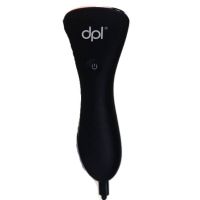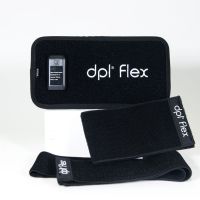 Written by Dr. Eric Wood, ND, MA
Written by Dr. Eric Wood, ND, MA
Dating back to the 1940s, magicians have coined the phrase “now you see me, now you don’t” when alluding to their mysterious disappearing acts. As applied to light therapy, this phrase is far less mystic and in fact, deciphers varying therapeutic wavelengths of light used to impart biological changes in the human body.
Light therapy, also referred to as phototherapy, laser therapy, and photobiomodulation therapy, was first discovered in the 1960s when a scientist named Endre Mester unexpectedly discovered the wound healing and hair growth benefits of a low-power laser beam. Fast forward to more recent studies and uncover that low-level laser therapy can cause a 35% increase in hair growth. With growing applications and research-driven support, photobiomodulation therapy is here to stay and provides great promise for a number of patient populations. Ready to learn more? Today we’re breaking down photobiomodulation therapy, the various forms of light involved, and how it might serve you.

Photobiomodulation therapy is a growing treatment that uses non-ionizing light sources to impart specific wavelengths of light energy in order to cause positive cellular changes. It involves both visible and non-visible wavelengths that penetrate varying depths to promote therapeutic benefits. Many devices exist on the market today with unique power outputs and light wavelengths emitted. With each curated to treat specific conditions, it is important to understand how these devices work and what to look for when choosing the best device for you or your loved ones.

Red and infrared light are the most common types of light utilized in photobiomodulation therapy. Red light is within the visible light spectrum, a portion of the electromagnetic spectrum that we can see. Generally, this range of visible light is from 380- 700 nanometers. While red light is visible to the naked eye, infrared light is not, lying just above red light on the electromagnetic spectrum with wavelengths ranging from 780 nanometers to 1 millimeter. Although both offer unique healing properties, they do have some overlap in terms of health benefits. Many therapeutic devices integrate both types of light therapy to help individuals reap the effects of each distinct light form.
 | dpl Clinical Handheld Light Therapy by LED Technologies View Product |
Best: dpl Clinical Handheld Light Therapy
A general rule of thumb is that the further down the electromagnetic spectrum you travel, the lower the energy output and the deeper its beams can penetrate the human body. With a longer wavelength and lower frequency, infrared light can therefore travel further through the skin promoting therapeutic effects for joints, muscles, and bones. Conversely, red light therapy is slightly higher on the electromagnetic spectrum and with a shorter wavelength and higher frequency is better capable of treating superficial concerns such as skin conditions and circulatory issues. In terms of heat production, wavelengths found in the mid-to-far infrared spectrum can produce heat whereas red light produces very little.

Red light excels at promoting change on a superficial level. As such, research continues to support its use in the management of fine lines, wrinkles, acne, and sun damage. Other potential indications include the treatment of hair loss, psoriasis, eczema, wounds, and neuropathic pain with ongoing research exploring its use. Along with infrared light sources, it shares a common ability to contribute to pain reduction.
With its deep-penetrating, heat-promoting wavelengths, infrared light has shown promise in the treatment of arthritis, Alzheimer’s disease, type 2 diabetes, and high blood pressure. It may also augment the treatment of neurological disorders, stroke recovery, and nerve and bone repair. Although encouraging studies exist, additional research is needed to solidify treatment parameters and mechanisms of action.
Yes! There are numerous at-home devices that provide users with the therapeutic effects of photobiomodulation. Many combine red and infrared light to provide the most comprehensive array of potential benefits. Application is typically performed using a wrap, handheld device, or similar setup that places the device just above the skin. Remember that each device is unique and desired outcomes will rely heavily on the correct use of the product and type of radiation emitted.
 | dpl Deep Penetrating Infrared FlexPad Light Therapy System View Product |
Best: dpl Deep Penetrating Infrared FlexPad Light Therapy System
Photobiomodulation therapy includes both red light and infrared wavelengths providing users with robust therapeutic benefits to treat a number of medical and cosmetic conditions. With both common and distinct indications and potential outcomes, red light and infrared therapy are often combined to promote more inclusive effects. Rehabmart has curated extensive offerings in the light therapy category with something available to meet each individual’s goals.
For more information, including blog posts, buying guides and informational articles on photobiomodulation therapy, check out Caregiver University and get expert-guided support on all your medical device needs.

Dr. Wood is a licensed naturopathic doctor in Washington D.C. and founder of Visionary Health. A graduate of the Canadian College of Naturopathic Medicine, Dr. Wood is a professor at John Patrick University in the Integrative and Functional Medicine Department as well as an adjunct professor at the American College of Healthcare Sciences in Holistic Nutrition. He began his career as a specialty physician for two leading supplement US companies, Neuroscience Inc. and Life Extension. Over his fifteen-year career in integrative and holistic medicine, he has worked in diverse capacities including as an educator; writer; medical advisor, consultant and formulator for supplement companies and treatment centers in the US and the EU; public speaker; and clinician. He has long been a practicing advocate of lifestyle medicine, fitness and mind body medicine approaches initially spurred by aging family members not getting help from traditional medicine and is passionate about innovating and bringing natural and integrative medicine to the masses!